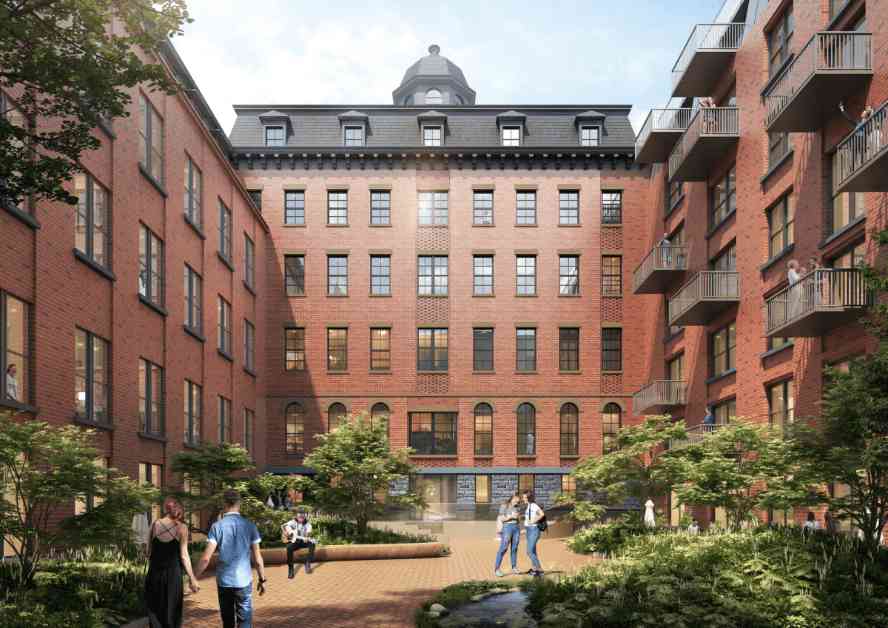An adaptive reuse project is underway to transform the historic St. John’s College in Bed-Stuy into a residential apartment complex, preserving an important part of the neighborhood’s history. The project, located on Lewis Avenue between Willoughby Avenue and Hart Street, will create over 200 mostly market-rate apartments.
The oldest wing of the campus, which ran along Willoughby Avenue, has been demolished and is being replaced by a similar new building that has already topped out. The rest of the historic buildings remain unaltered on the exterior, showcasing their Romanesque Revival architecture.
The complex, previously known as St. John’s College, has a rich history dating back to the 1870s when it first opened its doors. Designed by architect Patrick Keely, the red brick buildings feature multicolored slate mansard roofs, arched windows, a round corner tower, and other distinctive architectural elements.
Despite its architectural significance, the campus is not landmarked, making it vulnerable to demolition. However, the decision to adapt the buildings for residential use will help preserve this piece of Bed-Stuy’s history. The project is eligible for tax credits for adaptive reuse through the National Park Service.
The conversion to apartments was made possible through a deal between a private developer and the Roman Catholic Church, which still owns the site. The new development will feature 205 studio, one-, and two-bedroom apartments designed by Woods Bagot Architects. Amenities will include a roof terrace, parking, gym, and more.
The housing lottery for the income-restricted and rent-stabilized apartments in the complex has recently opened. The units, now known as The Hartby, are available for households earning 130% of the Area Median Income, with rents close to market-rate prices. The complex is expected to open this fall, offering a mix of modern interiors with historic elements.
Overall, the transformation of St. John’s College into The Hartby apartments represents a unique opportunity to blend historic architecture with modern living spaces, contributing to the revitalization of the Bed-Stuy neighborhood.
